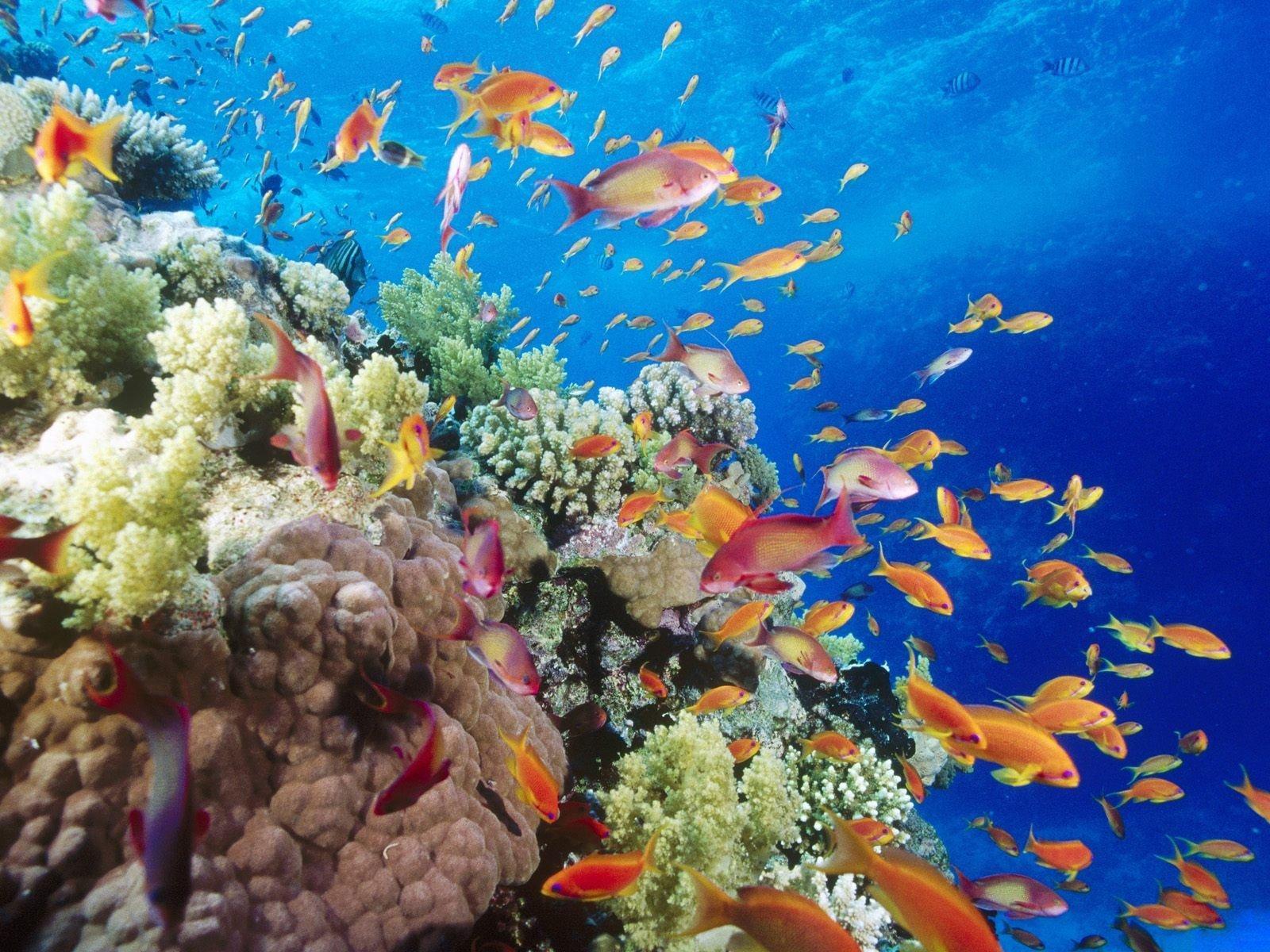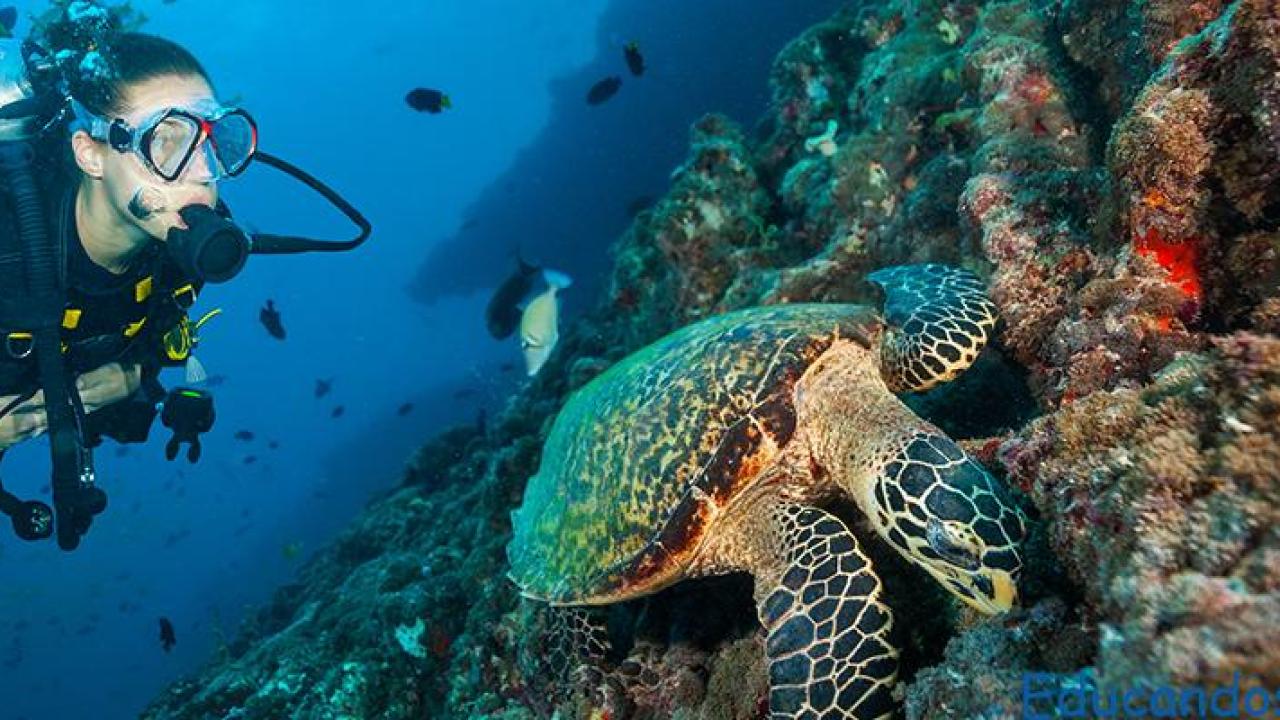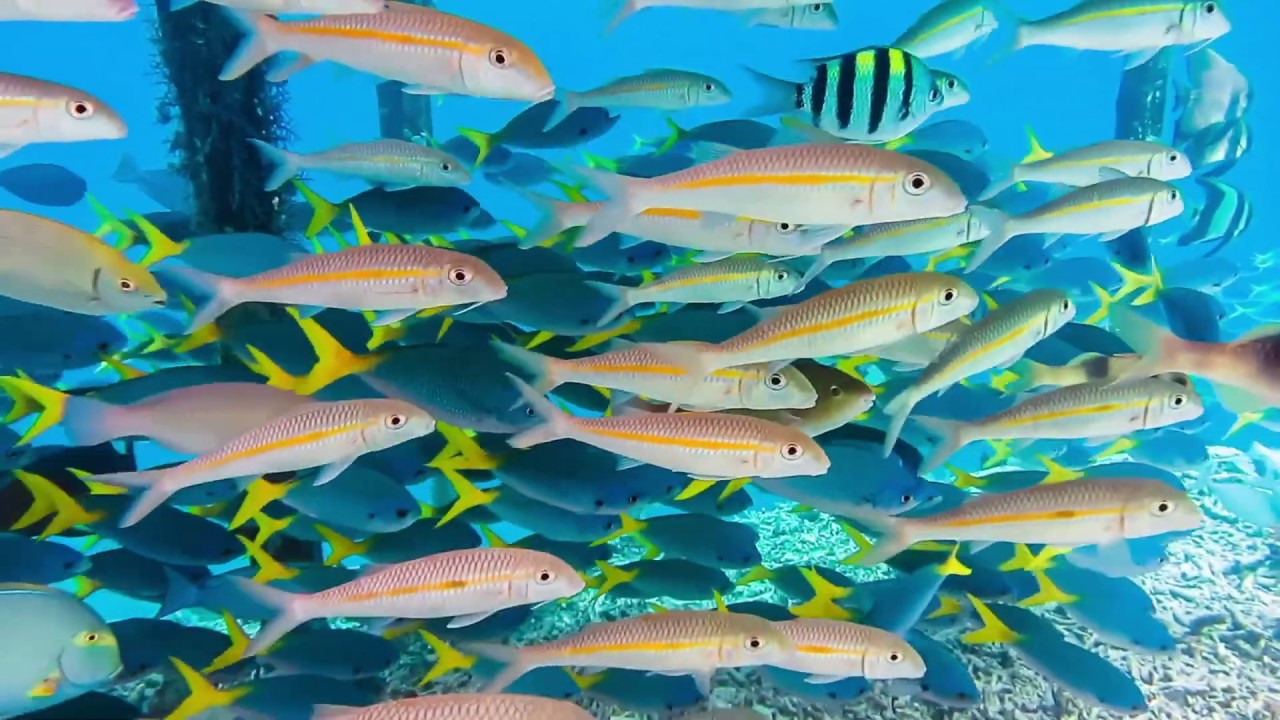The statement that the earth is made up of three parts of water is true. The marine biome is the largest biome in existence, because it makes up a whopping 70% of our planet, but it also makes up 90% of the world's water supply. Know the importance of marine biomes.

The Marine Biomes
There are several kinds of Biomes including marine biomes, They have more than 230 different species of living beings. The marine biome has the particularity that its waters are salty, they are possessors of an immense Marine Biodiversity and have created many very complex ecosystems.
Marine biomes are the ones that have the greatest merit because they have become a biotic factor. If there were no biotic factors, this would mean that the oceans would not have life. Another element that is essential for marine biomes is the sun, because it produces the sunlight that is needed for algae and phytoplankton, which are found at the base of the ocean food chain, to thrive.
In addition, other important elements for the development of life in marine biomes are the temperature and depth of the water. Keep in mind that the marine biome is a division of the aquatic biome, which is also a biome, but freshwater.
In both cases, it is a unique set of underwater ecosystems, which are the ones that provide habitat for an innumerable variety of animals, plants and conditions. But the marine biome is basically an ocean ecosystem.
And these marine biomes are distributed among the 5 main oceans, the Pacific, the Atlantic, the Indian, the Arctic and the Southern Ocean.
Climate
Marine biomes have an average temperature of about 39 degrees Fahrenheit, which is about 4 degrees Celsius. The oceanic biome is logically colder at the South Pole, but as it approaches the equator, it becomes warmer, due to the fact that the sun's rays directly affect the surface of the water. It must be remembered that marine species will be continuously affected by any change in climatic conditions.
The oceans are usually disturbed by ocean currents and waves. When atmospheric conditions become extreme, they produce hurricanes and typhoons that normally have great effects among the species of marine life. For that reason, species such as penguins, seabirds, walruses, sea lions, seals, plankton, polar bears and fish bear the brunt.
That is why several species have had to learn to adapt to these natural phenomena that occur seasonally, so they migrate to places with more security, when these extreme weather events occur or when they are about to pass.
High temperatures are another element that produces effects on species that have their habitat in the marine biome. They have caused the death, directly or indirectly, of many marine beings. Among its effects we can find coral bleaching, which has been the cause of 70% of marine deaths worldwide.
The substrate of marine biomes is constantly wet from water. All of it is sustained by aquatic life.
Marine Biome Plants
A test of the Importance of Biodiversity is that in this type of biome there are two main classes of plants that are seagrasses and algae and seaweed. Marine algae are included within the family of the most sophisticated plants. Algae and seaweeds represent simple life forms and are normally microscopic.
Plants in the marine biome range from tiny single-celled organisms to larger, more complex forms. Marine plants have their natural habitat near the surface of the water, in order to be able to take in the sunlight they need to carry out photosynthesis.
Similarly, marine plants take their nutrients from the particles that are carried by currents from the bottom of the sea. Some plants manage to survive deep in the ocean, where sunlight does not reach. These plants, which have the characteristic of being fluorescent, are capable of producing chemical lights.
Biome Plant Types
Many plants can be found in marine biomes, among which the following can be mentioned:
Phytoplankton
These are the smallest plants that inhabit the marine biome. It is a unicellular plant and is the base of the entire marine food chain.
Green algae (Chlorophyta)
Green algae is the best known representation of marine plants. It is their chlorophyll content that gives them their bright green color that characterizes them so much. As these plant species begin to calcify, they become part of the substratum layers of the ocean floor. According to statistics, there are about 200.000 species of algae in the marine biomes, but only about 36.000 have been catalogued.
Red algae (Rhodophyta)
Red algae is the largest and most diverse marine plant species in the marine biome. Their color is due to the fact that they have a pigment called phycoerythrin. Some of these red algae tend to stick to corals and over time build reefs. Both green and red algae can thrive in hot or cold water.
Brown algae, on the other hand, are also called phaeophytes, because they have a pigment called fucoxanthin, and they thrive very well in cold or warm waters. Also in the tropics it is possible to observe various species of brown algae. Brown algae are the most common plant species on reefs.
Cyanobacteria
Cyanobacteria, which are blue-green bacteria, formerly known as blue-green algae, are essentially microscopic threads. These microscopic threads are what transform the nitrogen they manage to capture from the atmosphere in ways that can be used by other marine plants.
Plants in marine biomes typically live in many habitats around the planet, including near coastlines, salt marshes, and in the open ocean. An example of this is the giant kelp, which is a seaweed that usually lives in the South Pacific, growing in colonies in the warm waters of the coasts. On the other hand, there are algae that live on sea ice and grow on floating ice caps.
The plants of marine biomes They can have multiple functions. The plants of the marine biome, especially seagrasses and macroalgae, provide shelter, hiding places and food for many creatures. Marine plants help corals to build reefs.
Reefs are held together by plants such as coralline algae. Algae usually live inside some marine animals. Also the tissues of corals are the place where millions of algae live per square centimeter. Marine plants are the sources of nutrients for corals.
Algae can also live in shells, inside giant clams, in flatworms and sea sponges. Marine plants also play a very important role in kelp forests, serving as habitat and food for a number of living things such as seals, octopuses and eels.
Animals of the Biomes
The marine biomes They are the habitat of a wide variety of animals. The animals get their food from plants and other small marine animals that live in the same biome. At the same time, plants provide shelter for some animals. Some very large families of animals that live in the marine biome include bacteria, fungi, sea anemones, mollusks, crustaceans, whales, and fish.
Some of the animals that live in marine biomes and that are more representative are:
Tiger shark
Their food is fish, marine mammals, seabirds, crustaceans and molluscs. Its habitat is close to the coasts of tropical and subtropical waters. Tiger sharks have very sharp teeth, which allow them to devour their prey.
Gray whale
The main food source is small amphipods and tuberous worms, similar to crustaceans. They essentially inhabit waters that are shallow in the North Pacific Ocean. Gray whales have long, streamlined bodies that allow them to effortlessly swim through the water.
Starfish
Its essential food is oysters, plankton and clams. It is found in the Pacific, Atlantic and Arctic oceans. They have an outer calcareous skin that has the ability to regenerate and protect it.
Sea Horse
They feed on shrimp. Its habitat is coral reefs and seagrass beds found in tropical waters. The sea horse has mobile eyes with which it is able to observe without having to move. The male is the one who carries the fertilized eggs, and takes care of the young until they come out of his bag, contrary to the general belief that it is the female of the species who raises the children.
Other kinds of animals that inhabit the marine biome are the blacktip reef shark, blue shark, manatees, dugongs, convict shark, box crab, and countless others.
Biome Classification
There are three types of marine biomes:
Oceans
The oceans are the largest classes of marine biomes, since they have an immense variety of living beings. They join with the terrestrial habitat through a zone called intertidal, which is the place where tides ebb and flow. However, the land and the ocean work together to be able to move water and heat through the land.
Coral reefs
Coral reefs are underwater limestone constructions that are created by the accumulation of tiny species of invertebrates that bear the name of corals. Coral reefs can only develop in tropical oceans that are shallow. These animals secrete calcium carbonate that turns into limestone in order to develop an exoskeleton.
They normally live in groups, and the skeletal material continues to develop to form a reef. Coral reefs are the habitat of many organisms of the marine biome, as well as more than 4.000 species of tropical fish.
Estuaries
Estuaries are, to put it simply, bays where rivers flow into the oceans. They are normally semi-enclosed, which makes them protected areas. The waters that surround them are full of nutrients that come from the rivers, and are necessarily shallow enough to allow the penetration of sunlight so that the plants can carry out photosynthesis. Because of this, estuaries are teeming with marine life.



